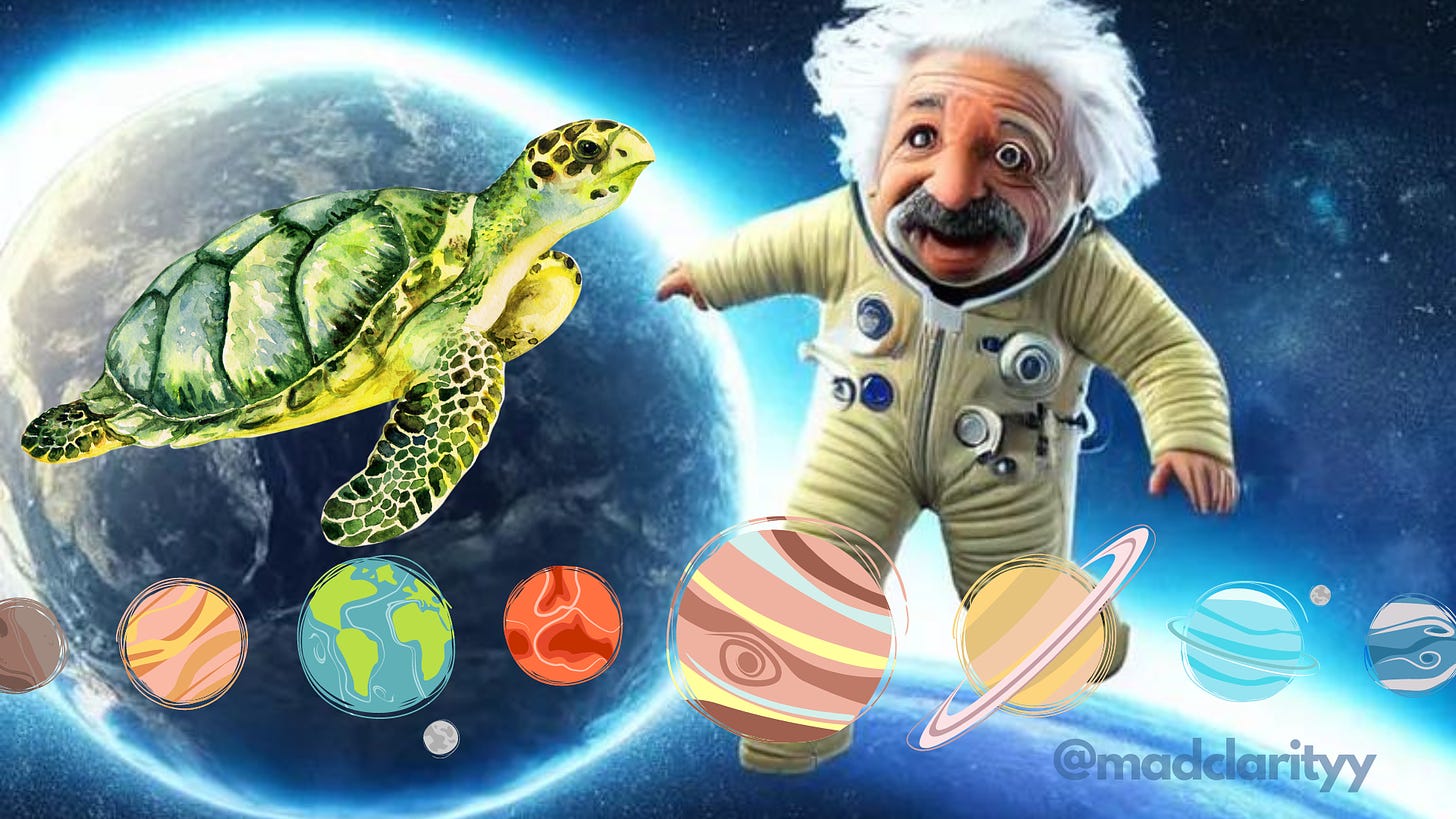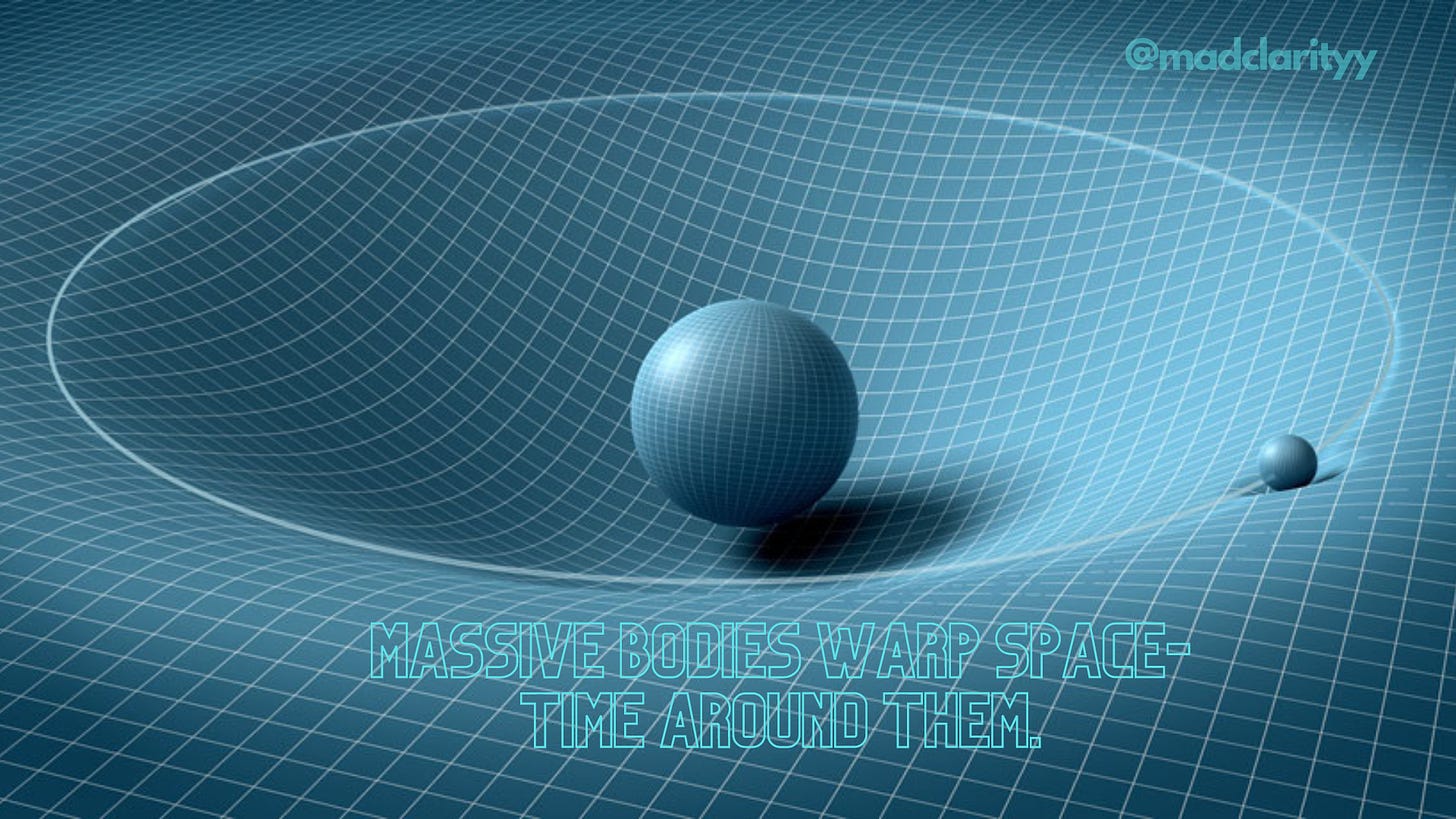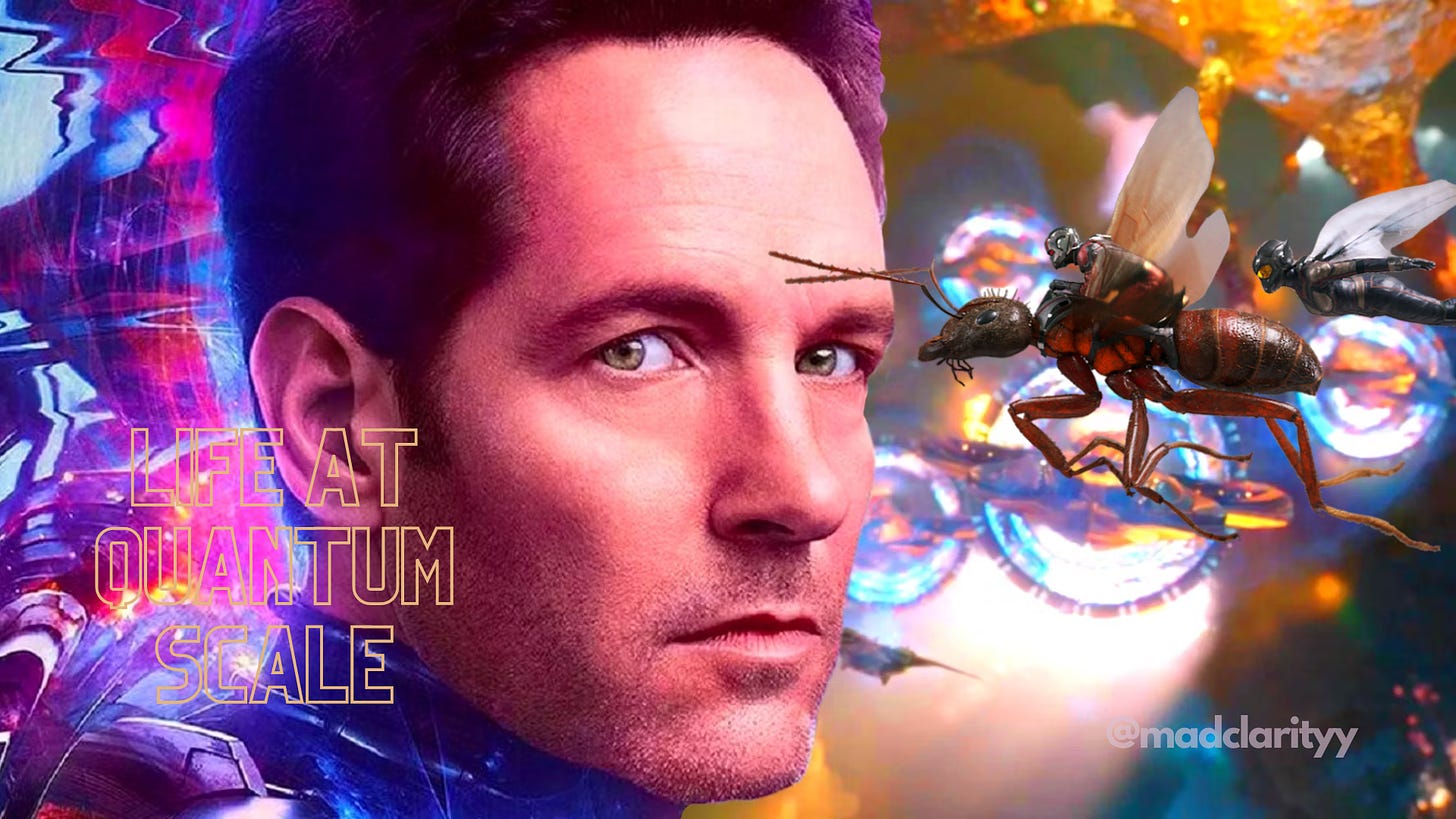space - continuous or discrete?
a mind bending thought experiment to understand the space and its weirdness -
Is space continuous or discrete?
Can space be infinitely divided into smaller spaces? If so, it is considered continuous. Let's take distance X as an example. If it can be halved (X/2), and this process can be repeated indefinitely, resulting in increasingly a smaller space each time, we can conclude that the space is continuous.
On the other hand, if we reach a stage where it is impossible to divide space into any smaller units, we can determine that space is discrete. If there exists a fundamental unit of space that cannot be subdivided, then space is considered discrete rather than continuous.
So, returning to the original question - is space continuous, discrete, or just weird?
In this article, I will present my perspective. I am reimagining Einstein's special theory of relativity (SR) and GR and its related thought experiments to speculate on the nature of space.
Classical relativity
Let's begin our thought experiment journey by briefly revisiting classical relativity.
If your friend is walking ahead of you, and both of you are walking in the same direction, you will need to walk faster if you want to catch up with her. This is a fundamental concept of classical relativity that aligns with our everyday experiences. It is something that we all intuitively understand and follow!
On the other hand, if you and your friend are walking in opposite directions, the relative speed between the two of you would be the sum of your individual speeds.
That is all there is to classical relativity!
So far so good,
However, things start to become weird and counterintuitive when we consider objects that travel at the speed of light, such as light itself. This peculiarity is what Einstein's theory of special relativity attempts to capture and explain.
Einstein’s theory of special relativity:
These are the physics rules that you should always remember and refer to when participating in the thought experiment on special relativity that follows in the next segment of this article:
Nothing travels faster than light.
The speed of the light is
constantfor all observers.The speed of the light is a magical constant for all observers.
Space (distance) = Speed of light * time
Nothing travels faster than light
The speed of light ‘C’ is approximately 3 × 10^8 meters per second.
The speed of the light is a magical constant for all observers
Imagine yourself on a spaceship that is zooming through space at half the speed of light, denoted as C. Now, if I were to ask you what the relative speed of light would be from your perspective, you might be inclined to think it would be C/2. However, according to Einstein's theory of relativity, it’s a bit more peculiar.
The speed of light is an absolute constant, unaffected by the speed of observers. So no matter how fast or slow you're moving, the speed of light remains the same magical constant for everyone.
This is where the concept of time dilation comes into play. Time dilation compensates for the constant speed of light by causing time to slow down for objects in super fast motion. As an object moves faster, time passes more slowly for that object relative to a stationary observer.
But for now, there's no need to worry about all of that. It can make things sound more complicated than they need to be, and it's not essential for our current discussion.
Space (Distance) = Speed of light (C) X Time (T)
In this context, space is nothing but the distance traveled by light with the speed C in a given amount of time T
or Simply..
Distance = Speed X Time
Reimagining special relativity - a thought experiment!
Context for the thought experiement:
Well we don't need to worry about the specific distance between the Sun and the Earth for now. What's important is to acknowledge the simple fact that it takes approximately 8 minutes for light to travel from the Sun to the Earth, as observed from our planet.
let’s begin the Gaintstein thought experiement:
Imagine a colossal humanoid figure named ‘Gaintstein’, whose size is comparable to that of our entire solar system. Picture this enormous being as an alien astronaut, gracefully floating amidst the vastness of space's vacuum.
Now, let's consider an intriguing scenario. If Giantstein were to clap his hands together or bring food from the plate to his mouth, the distance his hands would need to cover is comparable to the immense expanse between the Earth and the Sun. That's the premise of our thought experiment.
As we mentioned earlier, it takes approximately 8 minutes for light to travel from the Sun to the Earth.
So, for an observer on Earth, witnessing Gaintstein bringing his hands together would ideally take around 8 minutes, or perhaps even longer. Let's assume it's just 8 minutes for simplicity's sake, as nothing, including Gaintstein's enormous limbs, can move faster than light.
By now, you might have figured out that we are dealing with two frames of reference here: Gaintstein's frame of reference and the Earthlings' (you and me) frame of reference.
So let's delve into Gaintstein's experience.
How would time and distance unfold for him?
Let’s recall the fundamental laws we discussed earlier regarding the speed of light:
Nothing can exceed the speed of light.
The speed of light remains a universal, magical constant for all observers, regardless of their sizes.
Nothing can match the speed of light!
So even if Gaintstein were somehow able to clap his hands together at the speed of light, it would still take him a significant 8 minutes to perform even a extraordinarily simple everyday task. His life would be trapped in slow motion, burdened by his monstrous appearance, and condemned to a tragically slow existence. However, that is how his life would appear to us, those who live on Earth.
Fortunately for "Mega-Stein," reality works ‘differently’ or ‘normally’.
So what happens here as per SP Relativity theory equipped Albert Einstein?
“Space = Speed of light X Time
or Speed of light (Constant ‘C’)= Space/Time”
To maintain the magical constancy of light speed, space shrinks (length contraction) and time slows down for Gaintstein. In other words, light needs to cover a shorter distance in less time for Gaintstein, while it travels a regular distance in regular time for "Normalstein."
And why would space contraction (length contraction) occur for Gaintstein?
Let me briefly introduce Einstein’s theory of general relativity (GR) -
In GR, massive objects cause the contraction of space and the flow of time. They curve or warp spacetime, creating the effect we perceive as gravity.
As Gaintstein's size is huge and is comparable to the entire solar system, the immense gravitational field generated by his mass would cause space to contract around him. This contraction would result in distances appearing shorter from Gaintstein's perspective compared to the observer on earth who is in a different frame of reference.
Space therefore is relative
So, returning to the original question - is space continuous, discrete, or just weird?
At least it is NOT made of discrete fundamental units that cannot be subdivided.
So I believe it is relative, weird and weirdly relative.
More on space being relative..
“You can never grow to a size where you could touch the ceiling of the universe, nor can you shrink to a size where the space around you would cease to exist” - Super Special Relativity by @madclarityy
Quantum Madness
If one could shrink themselves to quantum ant scales, an entirely new cosmos would unfold before them. Whether you choose to magnify or diminish your physicality or size, reality or spacetime would adapt and persist, never ceasing to exist.
Relativity is easy if you don't complicate it
No matter if you are a giant or an Ant-Man, as long as you consider the speed of light as a constant and adjust the spacetime accordingly to match your experience on Earth, you can have a consistent reality. This means that the contraction of space and the dilation of time can be adjusted to maintain the laws of physics as observed on Earth, regardless of your size or perspective or speed.
The theory of relativity could have been called the theory of absolutism for its unyielding adherence to the absolute speed of light. That’s the starting principle. The relativism of space&time is the consequence - JannaLevin | Twitter











In Zeno’s effect Zeno tried to prove that the arrow is not moved but it strikes the bull’s eye too. This he based upon diving whole path into small parts like you are trying here. My post, from my personal experience of experiencing it, for more on it http://philosia.in/2022/05/23/enlightenment-is-experiencing-zeno-effect/
Philosophising leads no where, it is moving in a circle ⭕️. One needs to grow inward through meditation to understand the space as it is. It is nothingness but @madclarityy is against it so he could not even begin this journey.